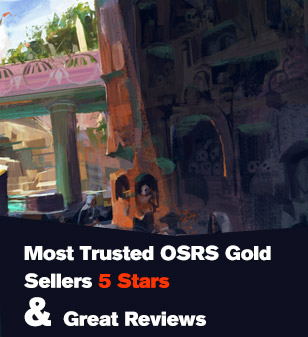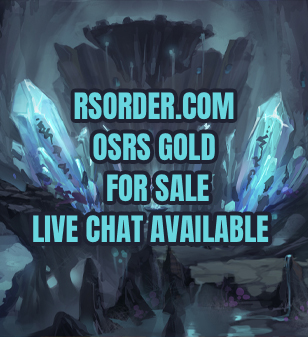Top News
-
How To Farm Coins In Madden 26 Ultimate Team
Nov-29-2025 PST / Madden 26 -
How to Disenchant and Salvage Gear in Path of Exile 2: A Detailed Guide
Nov-29-2025 PST / POE 2 -
Elden Ring Frostbite Build Guide
Nov-27-2025 PST / Elden Ring
Path of Exile 2 Currency Exchange Guide
What is the Currency Exchange in Path of Exile 2?
In contrast to most RPGs, Path of Exile doesn't use gold or a standard coin system. Instead, its economy is built entirely on consumable items known as currency items. These are not just used for trading, but also for modifying and crafting gear. This dual-purpose nature makes the currency system in PoE both dynamic and valuable.
Path of Exile 2 keeps this foundation but introduces a more streamlined exchange interface, along with enhancements to in-game trading. The Currency Exchange system refers to how players convert, trade, and utilize different currency items to progress and optimize their builds.
Types of Currency in Path of Exile 2
Currency in PoE2 comes in many forms, each serving specific functions. Here are the most important types:
1. Chaos Orbs
Primary trade currency in most leagues.
Used to re-roll modifiers on rare items.
The de facto mid-tier currency used for trading with other players.
2. Divine Orbs
Used to re-roll the numeric values of modifiers on items.
Became the new high-tier trade standard in late PoE1 and remains so in PoE2.
3. Exalted Orbs
Adds a new modifier to a rare item.
Still valuable but used less often as trading currency compared to Divines in PoE2.
4. Orbs of Alteration, Alchemy, and Scouring
Used in early-game crafting.
Commonly used in bulk for crafting or for preparing maps and gear.
5. New Currency Types in PoE2
PoE2 introduces several new crafting orbs to support the new skill and item systems.
These new orbs may not have trading value early on, but they're essential for crafting and niche trades.
How the Currency Exchange System Works
Currency exchange in PoE2 involves player-to-player trade, vendor recipes, and bulk currency conversion through NPCs or third-party tools.
1. Trading with Players
The most common method of currency exchange is through trading with other players. This is typically done via:
Official Trade Website (Path of Exile 2 Trade)
In-game trade board (introduced and improved in PoE2)
Community Discord servers or third-party apps
Trading allows you to convert your lesser-used currency into more valuable ones like Chaos or Divine Orbs. For example, you might sell Orbs of Alchemy or Maps for Chaos Orbs, then convert those into Divine Orbs later.
2. Currency Vendors and Recipes
NPC vendors also provide a rudimentary way to exchange currency.
3 Orbs of the same type can sometimes be exchanged for a higher-tier version (e.g., 3 Scroll Fragments = 1 Scroll of Wisdom).
Some vendor recipes can be used to obtain Chaos Orbs or other useful currency based on item stats or combinations.
In PoE2, these recipes are easier to discover and use thanks to better UI integration and quest-based tutorials.
3. Bulk Currency Exchange Services
Though not officially endorsed, many players use community-run tools like PoE.Ninja, TFT Discord, or Awakened PoE Trade to keep track of exchange rates. These tools help you convert 100 Orbs of Regret into a fair number of Chaos Orbs, or understand how many Divine Orbs are worth an Exalted Orb on that day.
Using Currency Efficiently
Spending currency wisely is critical in PoE2. Because most currency items have both a crafting and a trading function, every use is an economic decision.
When to Use vs When to Trade
Use crafting currency (like Orbs of Alchemy) early on to improve gear as needed.
Trade mid-tier currencies (like Chaos Orbs) once you reach maps and need specific items or upgrades.
Save or trade high-tier currencies (like Divine Orbs) to fund high-end crafting or gear purchases.
Crafting vs Buying Gear
While crafting can be rewarding, it's often more efficient to trade for pre-made gear. Crafting is highly RNG-based, so unless you're using a deterministic method (like Fossils, Essences, or Harvest Crafting), it's usually safer to buy gear directly.
Tips to Maximize Your Currency Exchange Efficiency
1. Learn the Meta
Know which currencies are in high demand each league.
Example: Essences or Fossils may spike in value based on popular builds.
2. Use Price Checking Tools
Tools like Awakened PoE Trade let you check item prices instantly.
Helps avoid getting scammed or underpricing your currency.
3. Track Exchange Rates
Check poe.ninja daily to see current trade values.
Helps you time your trades - e.g., trade Alchemy Orbs when they're in high demand.
4. Flip Currency (Advanced)
Some players make profit by buying undervalued currency and reselling it at market price.
Requires time, patience, and deep market knowledge.
5. Avoid Trading Scams
Only trade with verified accounts.
Avoid third-party trades that involve real money or external services.
Always double-check trade windows before accepting.
Currency Exchange in Solo Self-Found (SSF)
In SSF mode, where you cannot trade with other players, currency exchange is purely crafting-focused. You must:
Rely heavily on vendor recipes.
Be smart about hoarding key currencies.
Use crafting benches and mechanics like Harvest to get optimal results.
PoE2 makes SSF more rewarding by adding deterministic crafting options and loot smart-scaling, which increases the relevance of most drops.
Endgame Currency Sinks
In Path of Exile 2, endgame crafting and content feature heavy currency sinks. These include:
Atlas Tree Modifications (costing Orbs of Unmaking)
Boss Summoning using map fragments or special keys
High-tier gear crafting with rare currency orbs
Tempering/Masterworking (similar to Diablo IV's system, using specialized orbs)
These systems ensure that currency remains valuable throughout the game, encouraging active trading and wise investment.
Conclusion
The currency exchange system in Path of Exile 2 is a beautifully intricate blend of crafting utility and market economy. Whether you're flipping Chaos Orbs for Divines, crafting gear with Exalted Orbs, or engaging in strategic trading, understanding how to buy POE 2 Currency is key to success in Wraeclast.
With improved in-game tools, smoother interfaces, and deeper systems, PoE2 offers both veterans and new players a chance to master one of the most engaging economies in ARPG history.
So whether you're a ruthless trader or a meticulous crafter, remember this: every orb counts, and every trade is a step toward power.
Recently read
-
How To Farm Coins In Madden 26 Ultimate Team
Nov-29-2025 PST / Madden 26 -
How to Disenchant and Salvage Gear in Path of Exile 2: A Detailed Guide
Nov-29-2025 PST / POE 2 -
Elden Ring Frostbite Build Guide
Nov-27-2025 PST / Elden Ring


